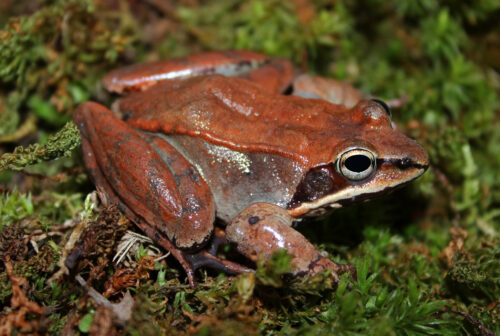Image courtesy of Flickr.
Loss of biodiversity is just one of many grave consequences due to climate change. Recent research sheds light on a species’ capacity to escape extinction by evolving rapidly at microgeographic scales. A study from the Skelly Lab of the Yale School of the Environment replicated research from 2001 that investigated how various populations of wood frogs, Rana sylvatica, exhibited differing embryonic development characteristics in response to factors associated with climate change.
The study sought to understand how certain species could adapt to climate change. “Wood frogs are a great study system because they form natural metapopulations and are highly adapted to cold and therefore sensitive to warming,” said A. Andis, a PhD candidate in the Skelly lab. Results showed that embryos in 2018 developed at rates fourteen to nineteen percent faster than those in 2001 on average. Further, there was variation among embryonic development rates across frog populations separated only by small geographic differences, a pattern found in both the 2001 and 2018 studies. Several environmental factors attributed to climate change, including canopy cover and pond temperature, influenced development rates.
“When it comes to predicting conservation outcomes into the future, [scientists] tend to [ignore] the capacity for organisms to adapt and variation within species and populations,” Andis said. This study provides some hope that organisms can mediate the effects of human environmental impacts. However, this capacity is limited— “too much change, too quickly” still has disastrous effects. Some species, unfortunately, may already be approaching this rate limit or have passed it already, a phenomenon known as “extinction debt.”

